September 30, 2016 Automatic External Defibrillators (AEDS)
THEIR DEPLOYMENT & USE WITHIN THE LIFEGUARD, AQUATICS SAFETY & RECREATION SECTOR
by Gerald M. Dworkin
02/15/05
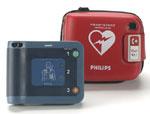
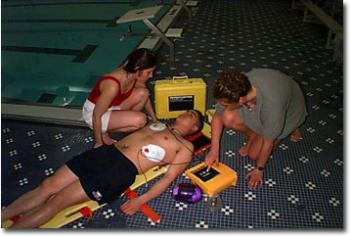
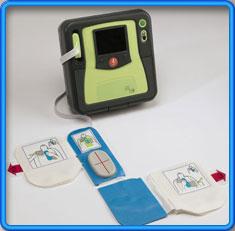
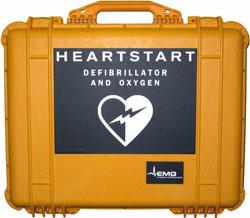
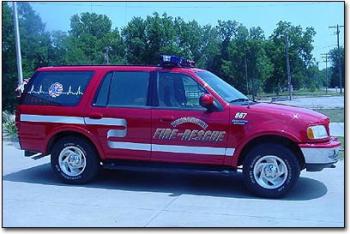

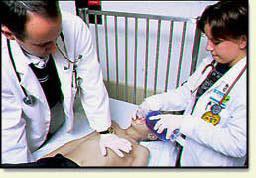
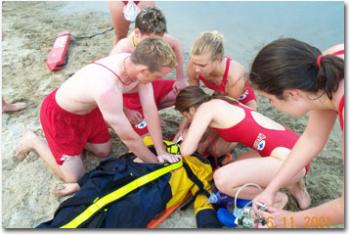
Sudden cardiac arrest is a condition in which the heart stops suddenly and unexpectedly and is caused by life-threatening arrhythmias in the heart’s electrical system. Most victims of witnessed sudden cardiac arrest are in Ventricular Fibrillation (VF), which is an abnormal, chaotic heart rhythm that prevents the heart from pumping blood. The only effective treatment for Ventricular Fibrillation is defibrillation – the delivery of a shock to the heart that stops VF and allows a normal heart rhythm to resume.
Each year, approximately 225,000 persons suffer out-of-hospital sudden cardiac arrest, of which only 2 to 5 percent are successfully resuscitated. These numbers are in stark contrast to the high success rate when defibrillation is performed immediately after the onset of ventricular fibrillation. The studies have shown that when a person suffers a sudden cardiac arrest, chances of survival decrease by 7 – 10 percent for each minute that passes without defibrillation.
A sudden cardiac arrest is not the same thing as a heart attack, although a person suffering a heart attack is more likely to develop abnormal heart rhythms and sudden cardiac arrest. Sudden cardiac arrest is unpredictable and can happen to anyone, anywhere – even a child. Risk increases with age. Although pre-existing heart disease is a common cause of cardiac arrest, many victims have never had any heart problems.
THE CHAIN OF SURVIVAL
In 1991, the American Heart Association (AHA) published “Improving Survival from Sudden Cardiac Arrest: The Chain of Survival Concept.” This paper identified the idea that all communities should adopt the principle of early defibrillation and that all personnel who are expected, as part of their professional duties, to perform basic CPR, should be equipped with an AED and be trained to operate it. Since then, the AHA has advocated that health professionals who have a duty to respond to a person in cardiac arrest should have a defibrillator available either immediately or within 1 to 2 minutes.
Note: According to Brief 419, published by Chronicle Guidance Publications (www.chronicleguidance.com) in which they provide a definition of Lifeguards as it relates to the Occupational Classifications, “Lifeguards…prevent incidents, perform rescues, and administer first aid and resuscitation to incident victims.” Therefore, they certainly meet the criteria established above for health professionals with a duty to respond to persons in cardiac arrest.
The AHA’s Chain of Survival depicts the critical actions required to treat life-threatening emergencies, including heart attack, cardiac arrest, stroke, and foreign body airway obstruction. The links within this “Chain of Survival” include:
1. Early Access to the emergency response system;
2. Early CPR to support circulation to the heart and brain until normal heart activity is restored;
3. Early Defibrillation to treat cardiac arrest caused by Ventricular Fibrillation; and
4. Early Advanced Care by EMS and hospital personnel.
The first link, Early Access to the emergency response system, includes early recognition of the cardiac emergency and early notification of rescue personnel via a universal 9-1-1 telephone system as well as an internal alert system within specific facilities to trigger a response by designated trained and equipped personnel.
The second link, early CPR, is a set of actions that the rescuer performs in sequence to assess and support airway, breathing and circulation.
The third link, early Defibrillation, is the delivery of a shock to the heart to convert the heart’s rhythm from Ventricular Fibrillation back to a normal heart rhythm.
The fourth link, early Advanced Care, relates to the response of highly trained and equipped pre-hospital EMS personnel (paramedics) who can respond to the patient and provide for the administration of drugs, advanced airway procedures, and other interventions and protocols, prior to the arrival of the patient at an advanced care facility.
However, in order for the patient to have the best chance of surviving an out-of-hospital cardiac arrest, CPR and early defibrillation must be provided within the first 4 minutes of the cardiac arrest, followed by Advanced Life Support within the first 8 minutes of the arrest.
CPR: LIFE SAVING OR LIFE SUSTAINING PROCEDURES?
It has always been my contention when conducting rescue training, regardless of whether it is for Fire, Rescue, EMS, Law Enforcement, or Lifeguard personnel, that we must make this training as realistic as possible. When our company conducts training programs for Lifeguards, Fire, Rescue, EMS, and Law Enforcement personnel, we include video segments of actual drowning and aquatic injury incidents, or new stories about those incidents to reinforce the training principles advocated within our curriculums.
In my work with young lifeguards, I often perceive the attitude that, “I’m trained in CPR, First Aid, and Lifeguarding. If a situation occurs, I can handle it.” Yet, in my work as an Expert in drowning and aquatic injury litigation, I’ve found numerous occasions when the lifeguard was confronted with a life or death emergency, that he/she failed to respond in a timely, appropriate and effective manner. When investigating the circumstances, the facts demonstrate that either the lifeguard was not appropriately trained to respond to the incident, regardless of his/her level certification; or the lifeguard was not equipped or did not have the resuscitation equipment immediately available to respond and provide timely, appropriate, and effective Basic Life Support (BLS) care.
Although the performance of CPR on a cardiac arrest patient prolongs the time that defibrillation can be effective, CPR should not be considered as a “life saving” procedure, but rather as a “life sustaining” procedure in that it typically will not restore a heartbeat to a cardiac arrest victim. CPR only temporarily sustains the cardiac arrest victim in that gray area between clinical death and biological death, hopefully long enough to obtain defibrillation and Advanced Life Support (ALS) Care, which are the 3rd and 4th links within the “Chain of Survival”.
Considering this fact, the Standard of Care for the emergency management of cardiac arrest patients, regardless of the cause, is immediate and effective Basic Life Support (early access, early CPR, and early defibrillation) immediately followed by Advanced Life Support. If an AED is not immediately available for the response to cardiac arrest victims within your facility, then the claim can certainly be made that your facility has breached the Standard of Care.
AUTOMATIC EXTERNAL DEFIBRILLATORS
An AED is a small, lightweight device that is designed to assess a person’s heart rhythm and to administer an electric shock to restore a normal rhythm in victims of cardiac arrest. A microprocesser inside the defibrillator analyzes the victim’s heart rhythm through adhesive electrodes; determines whether defibrillation is needed based on whether or not the victim has a “shockable rhythm”; advises the operator whether a shock is needed; and then charges itself for the administration of that electric shock. When the operator responds to the prompt to give a shock, an electric current is delivered through the victim’s chest wall to the heart.
DEFIBRILLATOR EFFECTIVENESS & SAFETY
Defibrillator effectiveness depends on two factors: (1) the electrodes being firmly and correctly connected to the patient; and (2) the defibrillation current being conducted through the patient’s heart. The electrodes require a dry surface to adhere to the patient’s chest. This can be accomplished quickly by wiping the patient’s chest with a towel prior to applying the electrodes. To ensure the defibrillation current is conducted through the patient, if it is possible to quickly and safely move the patient, he should be placed onto a backboard and out of any puddles of water.
Note: We’ve always advocated that the use of a backboard placed under the cardiac arrest patient should be standard protocol. It is much easier to move the patient, maintain the airway, and transfer the patient to an ambulance litter when the patient is on the backboard. And, when the patient is wet after being removed from the water, the backboard will allow water to drain off the patient and keep the patient from lying in puddles of water during defibrillation.
Before defibrillating the patient, the defibrillator operator must ensure that no part of his or her body or any bystander is touching the patient. Prior to pushing the shock/treatment button on the AED, the primary Rescuer should scan the immediate rescue scene and should both verbalize and visually confirm, “I’m clear, you’re clear, everyone is clear” prior to shocking the patient.
NOT ALL AEDS ARE CREATED EQUAL
AEDs used in and around swimming pools, beaches, waterparks, etc. will be exposed to elements not typically found in office buildings and other locations. Before purchasing an AED for use within the Aquatics environment, ask the manufacturer whether the device has undergone a drop test and splash test, and compare the results of these tests with other AED manufacturers.
As an example, according to the International Standard IEC529, a device with an IPX4 splash test rating requires the unit to be sprayed with water from a test fixture that looks like a showerhead. The standard specifies the rate at which water must be sprayed on the unit, and during the test, the unit is sprayed while the shower head and unit move so that all surfaces of the unit are exposed to waterspray. After this test, the unit is checked to be sure that it remains fully functional and meets all applicable safety standards. The IEC defines this level of protection as “Water splashed against the enclosure from any direction shall have no harmful effects.” In practical terms, the test is roughly equivalent to a heavy rainfall.
It should be noted that the drop test and splash test ratings have absolutely no impact on the functionality of the device. It is simply a measurement of that specific AED’s durability and water resistance.
Regardless of the drop test and splash test ratings, we recommend that any AED being used near water, should be stored in a watertight case, such as a Pelican case. Most AED manufacturers offer these cases as an option when purchasing the device.
While speaking with a manufacturer’s representative about their 3 AED models, we learned that the drop test and splash test ratings ran the full spectrum. As an example,
Model 1 Drop Test: X Splash Test: 1
Model 2 Drop Test: 2 Splash Test: 4
Model 3 Drop Test: 5 Splash Test: 5
Note: X denotes not tested, 1 is low and 5 is high.
LEGISLATION MANDATES AED DEPLOYMENT
Several states have recently passed legislation in recognition of the life-saving potential AEDs offer against sudden cardiac arrest. These states specifically mandate the deployment of AEDs in various public places and facilities and contribute to the establishment of the Standard of Care within communities.
In New York, the state amended its general public buildings law to now require all state buildings and state institutions to deploy at least one AED on the premises. The bill noted that a Senate Investigation Committee probe concluded that “the greater acquisition, deployment and use of automated external defibrillators in New York can save thousands of people from otherwise certain death from heart attacks.” In May 2003, New York also became the first state in the nation to mandate AEDs in schools. The law requires schools, vocational and extension facilities, and charter schools to keep at least one AED on their premises, and to have at least one available at school-sponsored athletic events, on campus or off.
In Rhode Island, the state mandated all health clubs registered with the Department of the Attorney General have at least one AED on the premises and be easily accessible to the staff, members and guests. The law also stipulates that at least one employee properly trained in the use of AEDs be on hand at all times.
In Louisiana, a new state law requires all physical fitness facilities, including clubs, studios, health spas, weight control centers, clinics, figure salons, tanning centers, athletic or sport clubs, YWCA and YMCA organizations, keep an AED accessible on site. The state law also requires all institutions of higher education that complete in intercollegiate athletics have an AED on the premises of the athletic department.
In Illinois, health clubs and fitness centers are required have AEDs on the premises along with trained staff. House Bill 4232 also applies to school gymnasiums and indoor park district facilities.
In Pennsylvania, funds are provided for one AED per school district throughout the state.
The Cardiac Arrest Survival Act, which became federal law in November 2001, requires the installation of AEDs in all federal buildings and encourages state and local governments, the private sector, and other entities to implement their own AED programs based on the federal model.
In April 2001, the Federal Aviation Administration (FAA) issued a final rule requiring U.S. airlines to carry AEDs and enhanced emergency medical kits on all domestic and international flights.
The Occupational Safety and Health Administration’s (OSHA) “Near Proximity Rule” requires response to life-threatening emergency within three to four minutes.
A number of national organizations have also published Position Statements in support of the deployment of AEDs. These include:
• American College of Emergency Physicians
• American College of Occupational and Environmental Medicine
• American Heart Association
• American Public Health Association
• American Red Cross
• Citizen CPR Foundation
• International Association of Chiefs of Police
• International Association of Fire Chiefs
• International Association of Firefighters
• International Liaison Committee on Resuscitation
• National Association of EMS Physicians
• National Association of State Emergency Medical Services Directors
• National Heart, Lung and Blood Institute
Note: To review these position statements, please access the National Center for Early Defibrillation web site at
http://www.early-defib.org/03_04.html.
The American Heart Association’s Position Statement on Defibrillation states, “the American Heart Association endorses the position that all emergency personnel should be trained and permitted to operate an appropriately maintained defibrillator, if their professional activities require that they respond to persons experiencing cardiac arrest.” Again, these position statements contribute to establishing the Standard of Care within each community.
The National Center for Early Defibrillation’s web site (http://www.early-defib.org) provides a wealth of information, including a list of state EMS offices. A number of funding opportunities for the deployment of AEDs may also be available through the state EMS offices and we encourage you to contact your local office to determine the level of funding that may be available to you to implement an AED program at your facility.
PUBLIC SAFETY RESPONSE TIMES
During the past several years, every major newspaper and television network has published or aired information on the benefits and use of AEDs. As a result, AEDs are now often seen in airport terminals and shopping malls. All commercial U.S. air carriers have an AED on board their planes, and many law enforcement agencies have equipped their vehicles with AEDs and, in many municipalities throughout the U.S., the police are dispatched in parallel with conventional EMS responders (i.e. EMTs and Paramedics) which has resulted in improved response time from the 9-1-1 call to arrival at the scene of cardiac arrest.
While speaking with aquatic facility managers and operators, when asked why their facility does not have an AED on premises, I often hear such excuses as, “all the Police cars have AEDs on board”, or “the rescue squad is right down the street”. However, one must always consider the dispatch mechanisms within the community, the community resources (i.e. basic life support and advance life support capabilities), and the response times for police, fire, and EMS. The average response time from dispatch to scene arrival across the U.S. is approximately 10 minutes. Once the EMS personnel arrive on the scene, it may even take several additional minutes before they are able to make contact with the patient.
Roger White, a Mayo Clinic researcher and medical director for the early defibrillation program in Rochester, Minnesota measured to the second how much time passes between a 9-1-1 call and the instant a shock is delivered to a cardiac arrest patient. His data showed that victims shocked within six minutes almost always lived, while those shocked after six minutes almost always die.
Currently 95 percent of sudden cardiac arrest victims die before reaching the hospital due to the length of time it takes for emergency personnel to arrive on the scene. Dr. Joseph Ornato of Virginia Commonwealth University in Richmond states, “the bottom line is we believe defibrillators in public facilities will double survival, if there are trained teams to use them.”
MECHANISMS & PHYSIOLOGY OF DROWNING
Besides the concerns for patients experiencing sudden cardiac arrest or heart attacks, we must consider the availability of AEDs for the appropriate response to submersion incidents resulting in cardiac arrest. The only acceptable response to a submersion patient resulting in cardiac arrest, while waiting for the response and arrival of Advanced Life Support personnel is:
1. Airway Management
2. Positive Pressure Resuscitation
3. Management of Hypoxia
4. Aggressive CPR
5. Early Defibrillation
Drowning is a significant health concern within the U.S. Drowning is the 7th leading cause of unintentional injury deaths for people of all ages and is the 2nd leading cause of unintentional injury deaths for children 1 – 14 years of age. Drowning is the 3rd leading cause of death, from all causes, for children 0 – 4 years of age. Annually, there are approximately 6,000 – 7,000 drownings in the U.S. Unfortunately, there is no method to determine the number of drownings that occur at “guarded” facilities. But, based on the number of inquiries from attorneys and reporters we receive, we believe this number is significant.
After investigating numerous submersion incidents, it is evident there is no single set of circumstances related to drowning or near-drowning. Very few witnesses ever recognize the victim’s struggle or signs of distress and what they most often report is seeing the victim motionless or submerged after seeing him playing at the surface of the water, swimming underwater, or engaged in breath-holding activities. According to Dr. Jerome H. Modell, “there are numerous situations in which becoming submerged in water may be a secondary, rather than a primary, event.” These situations can include individuals who become submerged due to head or spinal trauma, hyperventilation, syncope, cardiac arrhythmia, hypothermia, exhaustion, seizure, heart attack, drug or alcohol use, or sudden cardiac arrest. However, regardless of the cause or contributing factors, we must understand the basic physiology and/or mechanisms of drowning in order to appreciate the appropriate emergency response necessary to respond to and provide emergency resuscitation treatment for the submersion patient.
The drowning process includes a series of progressive and destructive stages. The conscious victim may only struggle at the surface of the water for 20 – 60 seconds. In many cases, there may not be any signs of a struggle, especially if the victim is rendered unconscious as a result of a medical condition or as a result of hyperventilation. Once the victim becomes hypoxic as a result of his/her compromised airway, the victim will continue to deteriorate into respiratory arrest, and if intervention is not rapid and effective, he will continue to deteriorate into cardiac arrest.
The immediate and most effective means to respond to this patient is to provide aggressive basic life support care which includes proper airway management (proper positioning and suction); positive pressure ventilation (mouth-to-mask or bag-valve-mask resuscitation); management of hypoxia (oxygen administration); CPR; and defibrillation.
All lifeguards, regardless of their training affiliation, are educated and certified in CPR which includes the demonstration of their proficiency in the administration of positive pressure resuscitation, the use of barrier devices and airway adjuncts, and external cardiac compression. These courses, regardless of whether the certification is through the American Red Cross, the American Heart Association, the National Safety Council, or the American Safety and Health Institute, all include information about the need for and use of AEDs. When a facility employs certified Lifeguard personnel, they cannot ignore the level of training of their personnel, and must take their training into consideration when developing their own facility Standard Operating Procedures (SOPs) or Guidelines (SOGs), as well as in the development of their Emergency Response Plans (ERPs).
The ERP for the response to any cardiac arrest patient, regardless of the cause of the incident, must include the response identified above if there is any hope in a successful outcome to the incident. Failure to respond appropriately is a failure to adhere to the Standard of Care which will result in not only a poor outcome for the patient, but most likely a law suit against the facility and their personnel as well.
CASE STUDY
On July 13, 2004, a 55-year-old man collapsed in the City of Medina, Ohio’s Aquatic and Fitness Center. Darlene Donkin, Aquatics Manager for the City, responded and assessed him to be in cardiac arrest. Darlene administered 2 rounds of CPR and the AED was brought to his side and the electrodes were attached. The AED assessed him to have a shockable rhythm, then charged itself and instructed the rescue personnel to administer the shock. After 1 shock, the victim’s heart returned to a normal sinus rhythm. The patient had triple by-pass surgery the next day and did not suffer any hypoxic brain damage as a result of this incident. Darlene is also a CPR Instructor and had taught CPR over 100 times, but had never actually performed it prior to this incident.


